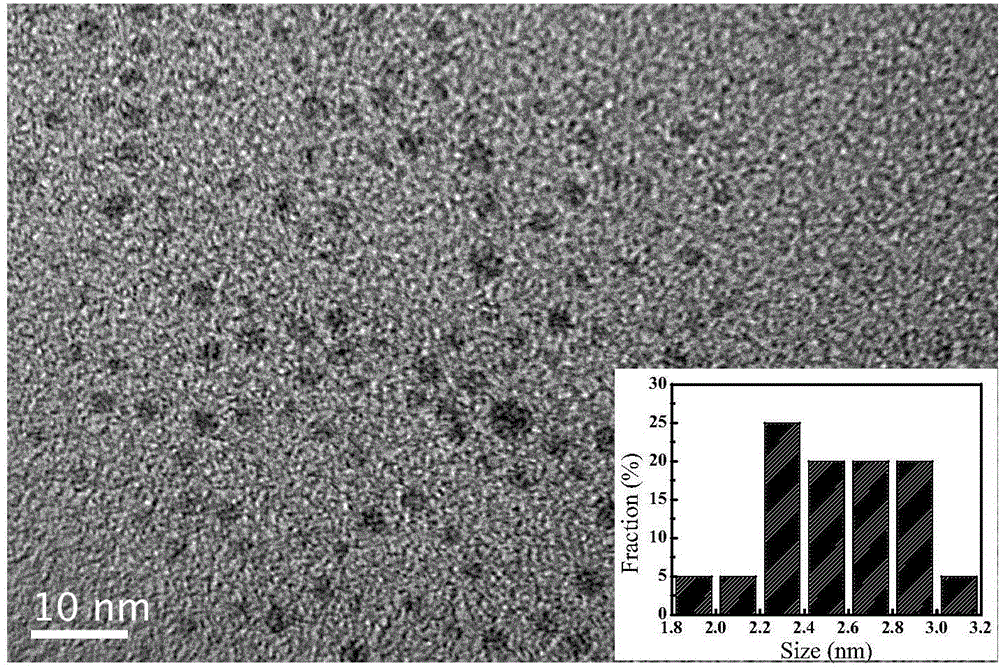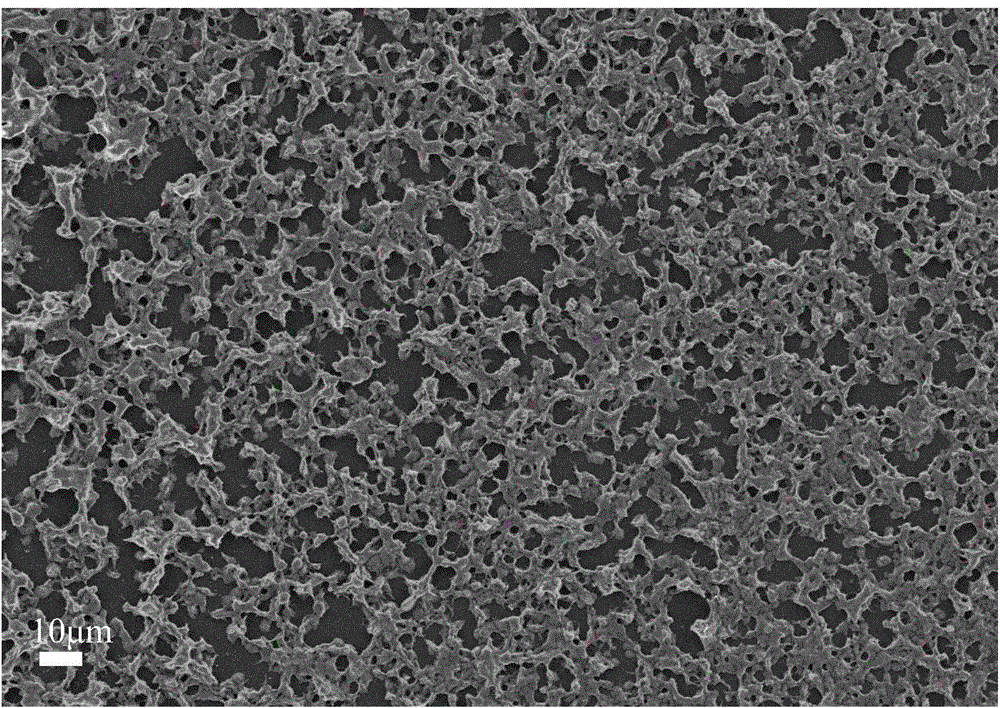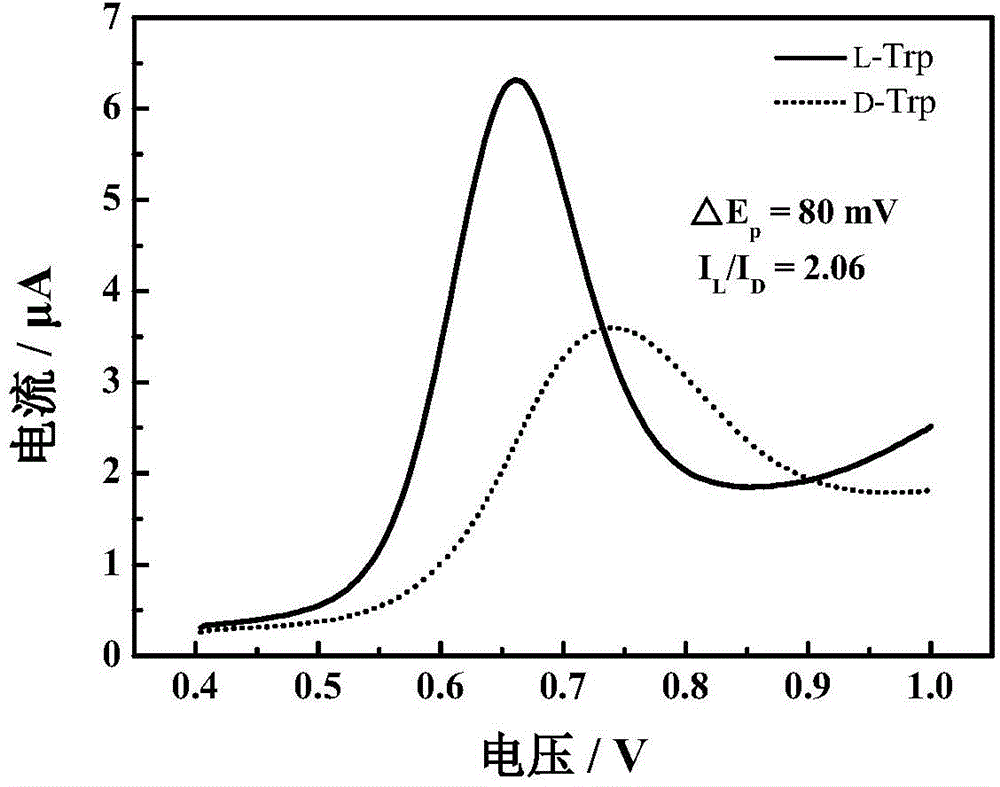Preparation of chitosan-carbon quantum dot composite film modified electrode and application of chitosan-carbon quantum dot composite film modified electrode to electrochemical identification of tryptophan enantiomer
A tryptophan enantiomer and carbon quantum dot technology, which is applied in the fields of biotechnology and electrochemical research, can solve problems such as unreported, and achieve the improvement of identification efficiency, environmental protection and pollution-free preparation process, and simple and easy preparation method. Effect
- Summary
- Abstract
- Description
- Claims
- Application Information
AI Technical Summary
Problems solved by technology
Method used
Image
Examples
Embodiment 1
[0027] Preparation of chitosan-carbon quantum dot composite film modified electrode includes the following steps:
[0028] (1) Weigh 2.0 g of citric acid and grind it into a white powder, put it into a 10 mL crucible, and heat and react at 200° C. for 0.5 h with a program-controlled box-type electric furnace. After the reaction, take out the solid sample, add 10mL ultrapure water, and dissolve it by ultrasonic. After the product was fully dissolved, the yellow transparent solution was obtained by suction filtration, and stored in the dark at room temperature.
[0029] (2) A three-electrode system was used in the experiment, a glassy carbon electrode (3 mm in diameter) was used as the working electrode, a platinum sheet was used as the auxiliary electrode, and a saturated calomel electrode (SCE) was used as the reference electrode. The glassy carbon electrode is the working electrode, respectively immersed in the carbon quantum dot solution prepared in step (1), and within the...
Embodiment 2
[0032] The preparation of the chitosan-carbon quantum dot composite film modified electrode and its application to the electrochemical method for identifying tryptophan enantiomers are the same as in Example 1.
[0033] The optimal recognition temperature of tryptophan enantiomers by the chitosan-carbon quantum dot composite membrane modified electrode was investigated. The prepared chitosan-carbon quantum dot composite film modified electrode was immersed in the L / D-tryptophan enantiomer solution at a concentration of 0.5mM, the standing time was 60s, and the experimental temperature was 5-35°C. The recognition effect diagram of tryptophan enantiomers is shown in Figure 4 , it can be seen that the best recognition temperature of chitosan-carbon quantum dot composite film modified electrode for tryptophan enantiomer is 15 ℃.
Embodiment 3
[0035] The preparation of the chitosan-carbon quantum dot composite film modified electrode and its application to the electrochemical method for identifying tryptophan enantiomers are the same as in Example 1.
[0036] The optimal pH for recognition of tryptophan enantiomers by the chitosan-carbon quantum dot composite membrane modified electrode was investigated. The prepared chitosan-carbon quantum dot composite film modified electrode was immersed in L / D-tryptophan solution at a concentration of 0.5mM, the standing time was 60s, and the experimental pH was 4-10. The effect diagram of enantiomer recognition is shown in Figure 5 , it can be seen that the chitosan-carbon quantum dot composite film modified electrode has the best recognition pH of tryptophan enantiomer at 7.
PUM
| Property | Measurement | Unit |
|---|---|---|
| diameter | aaaaa | aaaaa |
Abstract
Description
Claims
Application Information
 Login to View More
Login to View More - R&D
- Intellectual Property
- Life Sciences
- Materials
- Tech Scout
- Unparalleled Data Quality
- Higher Quality Content
- 60% Fewer Hallucinations
Browse by: Latest US Patents, China's latest patents, Technical Efficacy Thesaurus, Application Domain, Technology Topic, Popular Technical Reports.
© 2025 PatSnap. All rights reserved.Legal|Privacy policy|Modern Slavery Act Transparency Statement|Sitemap|About US| Contact US: help@patsnap.com



